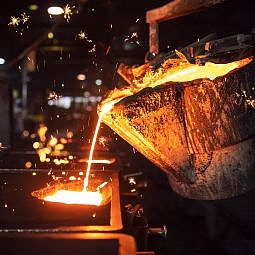
Aluminum is a widely used metal due to its malleability and strength. But at what point does aluminum begin to melt? It turns out that the answer is not as simple as you would think.
Let's explore at what point aluminum begins to melt and the different variables that affect the melting temperature of aluminum.
The melting point of a material is the temperature at which it transitions from a solid state to a liquid state. Generally speaking, materials with higher melting points require more energy to transition from solid to liquid, while materials with lower melting points require less energy. This energy means some materials can become liquid even at relatively low temperatures, while others remain solid until they reach higher temperatures.
Aluminum exists in many forms, including foil, alloys, oxides, and metals. Each form has distinct properties and characteristics, including its specific melting point. For example, pure aluminum metal melts at 660°C (1220°F). However, when you alloy it with other metals, such as copper or magnesium, the melting point can change significantly. Copper-aluminum alloys can melt between 500-600°C (932-1112°F), while magnesium-aluminum alloys can melt between 600-700°C (1112-1292°F).
Additionally, aluminum oxides have even lower melting points than pure aluminum metal. They can start to melt anywhere from 200-400°C (392-752°F). As you can see, understanding the point at which aluminum begins to melt depends largely on what form it takes.
So, what temperature should you use if you need to melt aluminum for a particular application? This answer will depend on the form of the aluminum and what you intend to do with it. If you need a higher temperature for welding or soldering purposes, you will want to choose an alloy with a higher melting point. On the other hand, if you need to create aluminum foils or thin sheets, you should use an oxide or pure aluminum metal with a lower melting point.
Ultimately, finding the right temperature for melting aluminum depends on your specific application and the form of aluminum you are using. Research and determine the most appropriate melting point for your needs to ensure you get the most out of your aluminum.
If you are looking for a T-slot extrusion for your next project, look no further than A-Line Automation. We have various aluminum extrusions and shapes, so you will surely find the perfect one for your project. Contact us today to learn more about our aluminum extrusions and get started.